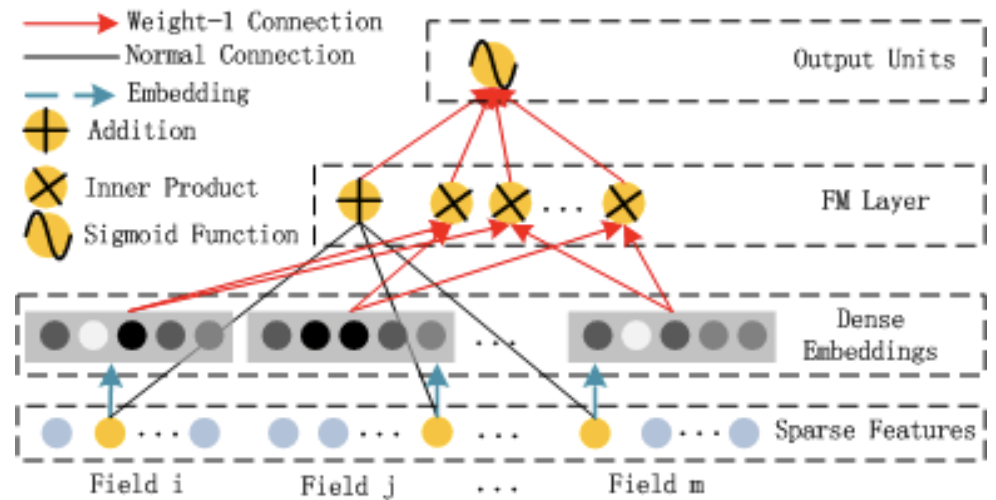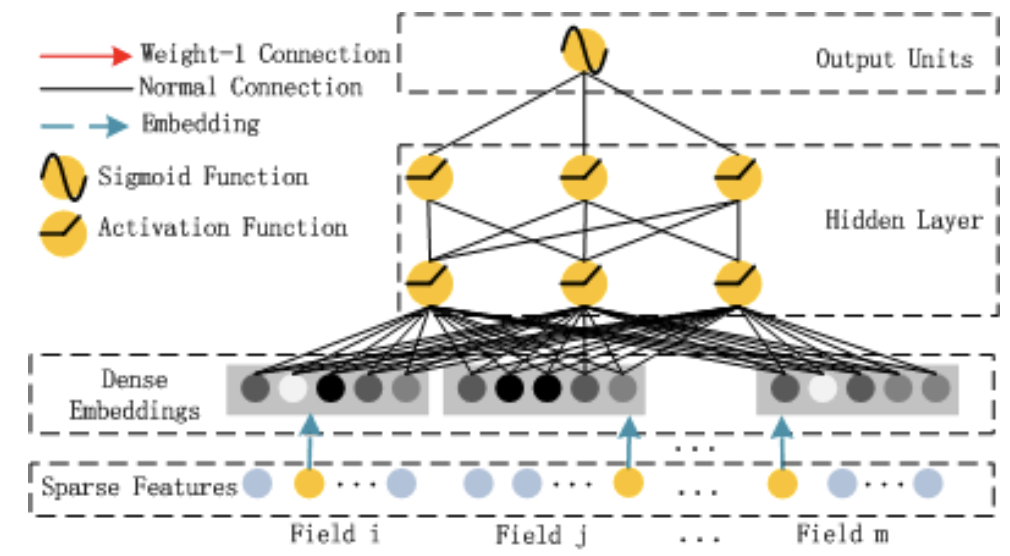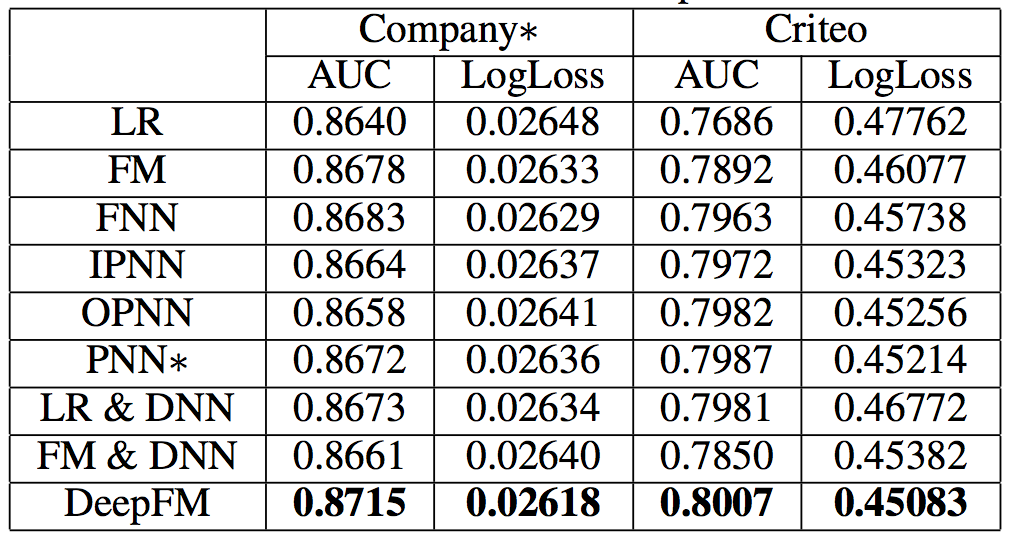DeepFM: A Factorization-Machine based Neural Network for CTR Prediction (2017)
In this paper, we show that it is possible to derive an end-to-end learning model that emphasizes both low- and high- order feature interactions. The proposed model, DeepFM, combines the power of factorization machines for recommendation and deep learning for feature learning in a new neural network architecture.
1. DeepFM

图1 Wide & deep architecture of DeepFM
为了学习low-order和high-order的feature interactions,该论文提出了一种Factorization-Machine based neural network (DeepFM),其包括两个模块:FM component和deep component,如图1所示。其中FM component用于学习low-order feature interactions,而deep component用于学习high-order feature interactions,与Wide & Deep模型类似,这两个模块也是joint training:

图2 DeepFM joint training
FM Component

图3 The architecture of FM
FM component就是一个factorization machine,如图3所示,其包括两个计算单元:Addition unit和Inner Product units:
- Addition units:作用于Sparse Feature上
- Inner Product units:作用于Dense Embeddings上
Deep Component

图4 The architecture of DNN
deep component是一个feed-forward neural network,如图4所示,其用于学习high-order feature interactions。在该DNN结构中,为了处理具有超高维、稀疏、categorical-continuous-mixed等特点的raw feature,需要添加一层embedding layer,将raw feature转变为一个low-dimensional、dense real-value vector。
需要注意的是,与tensorflow的embedding实现不同(tf.feature_column.embedding_column(col)),该模型使用FM的latent feature vectors作为参数计算最终的结果,如图5所示:

图5 The structure of the embedding layer
另外,由图3和图4可知,FM component与deep component共享embedding layer,这么做的好处是:
- it learns both low- and high-order feature interactions from raw feature
- there is no need for ex- pertise feature engineering of the input, as required in Wide & Deep
2. 其他相关Neural Networks
在DeepFM之前,也有一些deep models用于CTR预测的报道,如图6所示:

图6 The architectures of existing deep models for CTR prediction: FNN, PNN, Wide & Deep Model
FNN:一个FM-initialized feed-forward neural network,图6(左)所示PNN:与FNN类似,只不过在embedding layer与the first hidden layer中间添加了一层product layer,图6(中)所示Wide & Deep:能够同时对low- and high-order feature interactions进行学习的feed-forward neural network,图6(右)所示
由图6可知,各模型的重点都是研究如何处理大规模稀疏特征,即模型输入,而模型的结构都较为简单。
3. 实验
该论文从计算复杂度和效果两个角度对各模型进行评测:
- Efficiency Comparison

图7 Time comparison
- Effectiveness Comparison

图8 Performance on CTR prediction
结果显示,无论在计算复杂度以及模型效果上,DeepFM均占优。
另外,论文还对模型的Hyper-Parameters进行了实验,如Activation Function、Number of Neurons per Layer、Number of Hidden Layers和Network Shape等。
4. 总结
该论文给出了DeepFM在计算复杂度以及模型效果上获得提升的原因:
- it does not need any pre-training
- it learns both high- and low-order feature interactions
- it introduces a sharing strategy of feature embedding to avoid feature engineering